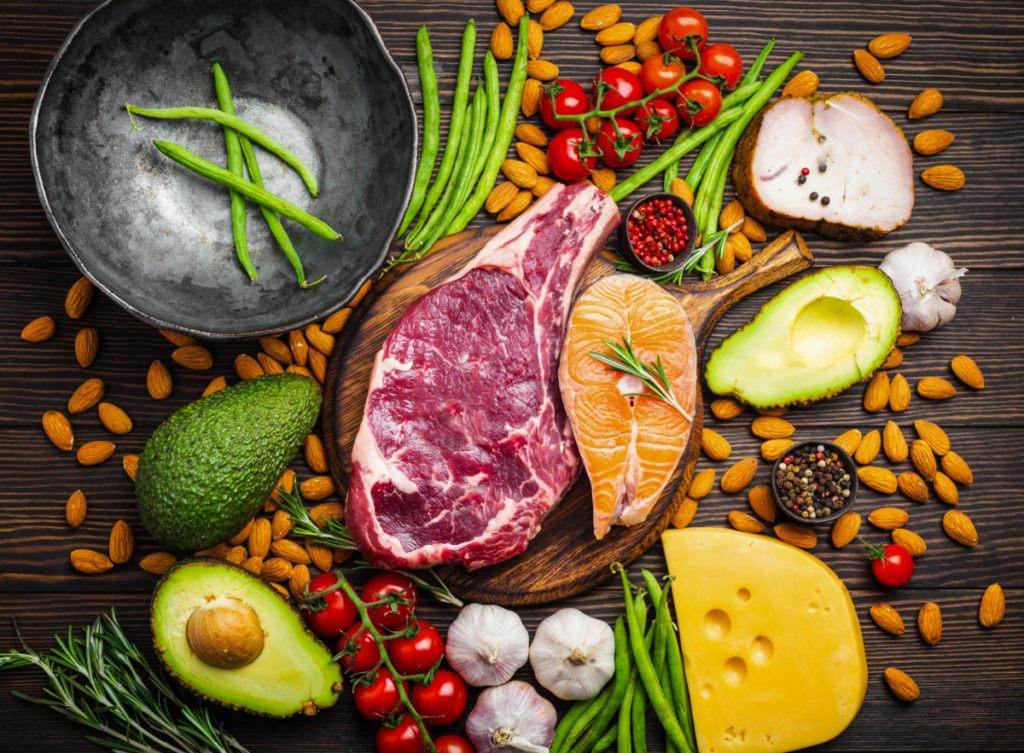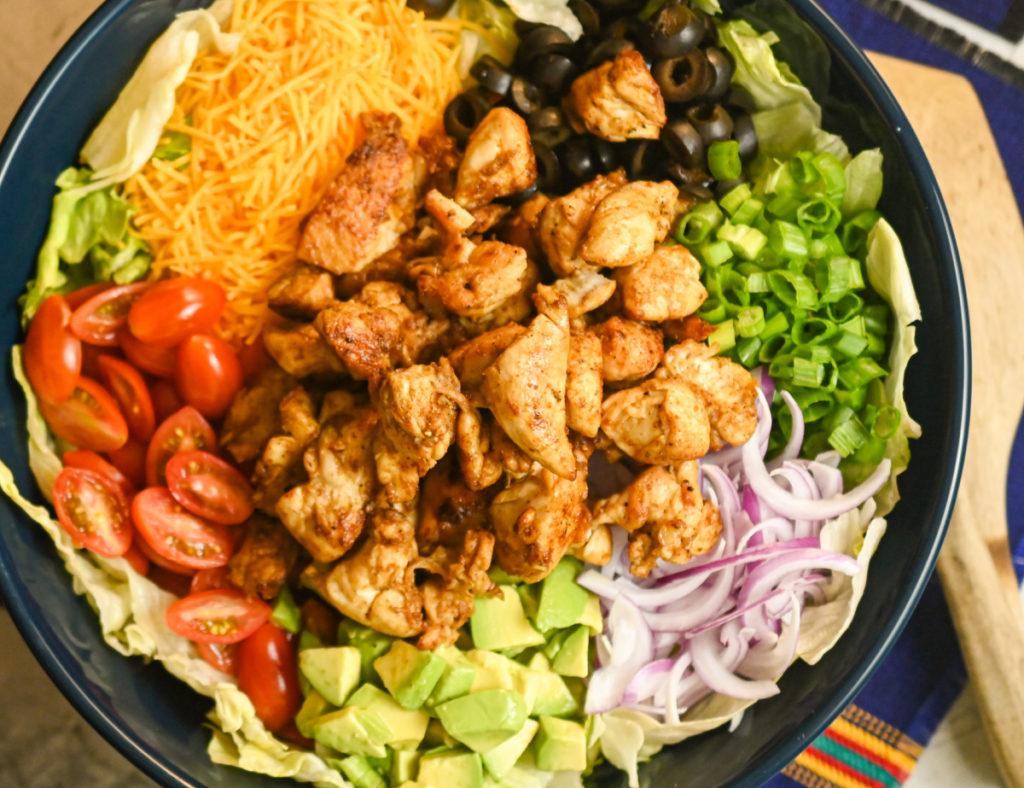Ready to jump back into the keto diet after a period of cheating? Look no further. With the tips I'll be sharing, you'll be back in a state of ketosis in no time.
Whether it's a cheat meal or the holiday season that got the best of you, don't punish yourself for an unplanned indulgence; instead, make it a learning experience and let it motivate you.
After all, there's no going back now. Hopefully, whatever weight gain has occurred is mostly water weight and not a reversal of the fat loss you had achieved.
One Meal Cheat Versus Long Derailment From Keto

If it was just one cheat meal, getting back on track can be as simple as making your next meal your very best meal.
You may be surprised how quickly it is to start the diet again. Keep in mind that you did not undo all the keto progress you have made with just one high-carb meal.
So change your mindset and understand that a single mishap will not cause the entire process to unravel.
Instead, make up your mind to make this a keto lifestyle so that you won't revert to your old habits. Don't make a big deal
However, if you fall off the ketogenic diet for a longer period of time, you'll want to make sure that you give your body time to reset.
You'll basically be starting your keto journey from scratch, so make sure that you are eating the right keto foods to help you get into ketosis quicker.
Start Slowly, When Getting Back To Keto

I recommend you start slowly by reducing your carb intake to 40-50 grams daily to start with.
I know the keto diet limits carb intake to 20-40 grams daily, but you must give your body time to adjust. Otherwise, you risk a carb binge where negative emotions do not allow you to reach your health goals.
Once you've been following the keto diet again for a couple of weeks, you can gradually reduce your carb intake to 20 grams or less until you reach optimal ketone levels.
Keep in mind that it may take a few weeks, so be patient and don't get discouraged.
Before you know it, you will be reaping the health benefits of keto again.
How Long Will It Take To Get Back Into Ketosis?
It takes the average keto dieter around 2-4 days to get back into ketosis, but there is no way of knowing for sure how long it will take.
This is because a lot of it will depend on how long you have been away from keto.
If it has only been a few days, ketosis can be achieved quickly and with relative ease.
But if it's been weeks or months since your last keto meal, you may need to take more time and gradually reduce your carb intake until ketosis is reached.
If, while you were away from keto, you had been eating large amounts of carbs as well as overeating, then keto adaptation and ketosis may take longer.
But with patience, dedication, and the right steps, you will be back on track.
The important thing is to get back on the keto bandwagon as soon as possible and to put in place a plan to make sure it doesn't happen again.
Jump into the keto wagon and determine to make the lifestyle changes needed to make sure this time your journey is successful!
If you've been doing keto for a week or months and have fallen off the wagon, I'll be sharing the best way to tips that will help you get back on and stay on it.
My Top Tips On How To Restart The Keto Diet

Before starting keto again, it is important that you understand the principles of the keto diet and how they apply to your personal goals.
It's important to understand your current lifestyle and eating habits before you begin keto again.
Take some time and reflect on any past successes or failures from the last time you did keto. This way, you can better understand what worked and what didn't.
Set realistic keto goals that are achievable within a reasonable time frame.
I am going to share with you my top tips to implement to get back on track with your keto diet.
Restarting the keto diet can feel overwhelming. But that does not have to be the case with the right guidance.
Re-Familiarize Yourself With The Essentials Of A Ketogenic Diet
To ensure success, brush up on the basics of a keto diet. Getting back to the basics will help remind you of the ketogenic diet rules and help you stay focused.
Some keto basics include:
- Eating moderate protein such as lean meat, fish, poultry, eggs, and low-carb tofu if you're doing a vegetarian keto diet. low-carb vegetables such as leafy greens, cabbage, broccoli, and cauliflower.
- Avoiding processed carbs such as wheat-based bread, pastries, and pasta as these will not only prevent ketosis but increase carb cravings.
- Eating healthy fats in the form of nuts, seeds, avocados, olive oil, and coconut oil.
- Sticking with low-carb vegetables with a focus on above-ground vegetables like leafy greens, cabbage, broccoli, and cauliflower. Non-starchy vegetables will help add fiber to your diet and keep your daily carb intake within your keto macros.
Evaluate Your Current Lifestyle Habits And Establish Realistic Goals
Set realistic keto goals that are achievable within a reasonable time frame. It's key to remember that you didn't get to the place you are overnight and, therefore, will not see results immediately.
I recommend you set short and long-term goals, as this will help you stay focused and motivated.
Keep your goals visible as an effective way to remind you of your lifestyle change.
Eliminate Temptation Wherever Possible
Ideally, you would get rid of all the non-keto foods in your kitchen that tempt you. Clearing out processed, high-carb, or "forbidden" foods will help you stay on track and reduce cravings.
After all, the last thing you need is a bunch of trigger foods constantly tempting you. This is especially key when your body transitions back to keto.
Once you enter ketosis and your hunger is back in control, it will be easier to pass on these foods.
However, this may not be practical if everyone in your home is not doing keto.
In this case, aim to keep them out of immediate reach whenever possible and have a frank conversation with your family about why keto is important to you.
Start Tracking Your Keto Progress
Keeping a food journal can be a great tool for helping you stay on track and assess your success or struggles with keto.
Would you like to save this?
This could be as simple as writing down what you eat each day, or it could be more detailed by including your feelings around your meals so that you can better pinpoint any triggers you may face.
Increase Your Water Intake

There is a good reason why increasing your water intake while dieting is one of the most important recommendations.
Drinking plenty of water is key when doing keto, and even more after getting back on track.
This is because it assists in flushing out toxins from your body associated with high-carb consumption.
Aim to drink at least eight glasses a day.
Prep Your Keto Meals
Your success on keto is maximized when you meal plan.
Keto meal planning will help you stick to the diet because, when you plan your meals ahead of time, you can confidently reach for your meals and snacks rather than wait until you are hungry to decide what to eat.
By eliminating the "what should I eat" question, you have one less decision to make each day, helping you stay on keto and not deviate from your ketogenic diet goals.
After all, if you have all the ingredients necessary for the recipes, sticking to the diet will become easier.
There are so many great keto recipes that you can make to help replace their high-carb counterparts.
Besides planning your meals, you might want to try our Fit To Serve Group Keto Recipe App so that you have access to hundreds of tried and true recipes that will help you stay committed to the diet and see the results you want.
Try Intermittent Fasting
Intermittent fasting (IF) is a ketogenic strategy that can help you increase ketone levels and speed up your weight loss results when done correctly.
You'll deplete your glycogen stores and reduce blood sugar levels at a faster rate making it a great option for those who have a hard time entering nutritional ketosis.
IF consists of periods of eating and fasting, usually between 12 and 16 hours a day, with 8 to 12 hours of fasting windows in which no food is consumed.
During the fasting window, ketones are produced from stored fats in the body since calorie intake is not in the equation.
Get Moving

Exercise is an important part of any diet, and it may be even more important when getting back on keto.
This is because it can help boost ketone levels and speeds up your metabolism.
You don't need to start a hardcore exercise routine to see the benefits.
Walking, jogging, stretching, and light strength training are all great forms of exercise that can be done at home with little or no equipment.
I recommend you aim for around 30 minutes of physical activity per day to help jumpstart ketone production.
Try Using Exogenous Ketones
Exogenous ketones are ketone supplements that can be a great way of increasing ketone levels in the body.
We can enter ketosis by using outside sources such as exogenous ketone supplementation.
Going into a state of ketosis can be done externally with the help of exogenous ketone supplements and MCT oil, which acts as a precursor.
They provide your body with ketones, which can then be used as fuel for energy, thus helping you reach ketosis faster than traditional dietary and lifestyle changes alone.
If you find yourself struggling to stay on keto, consider ketone supplements to help you reach ketosis faster.
Another benefit of exogenous ketones is that they can help beat keto-flu symptoms that can affect energy levels.
Supplement With Adaptogens
Adaptogens are herbs that help cope with stressors from outside sources like work or the environment rather than those caused internally by dietary changes like those found on the ketogenic diet.
By adding adaptogens to your diet, you further enhance getting back to keto and reduce the stress that comes with it.
Some of my favorite adaptogens include ashwagandha, Rhodiola Rosea, and Schisandra Chinensis. This supplement does a great job of including these adaptogens and more.
Build A Support Network Around You
Don't be afraid to ask family and friends for help if needed.
Having people who understand why you are doing the keto diet and sharing your goals with them can help keep your motivation when food temptations strike.
It is also helpful to join keto-related online support groups, as they can be a great source of inspiration and motivation.
These communities will provide you with the tips and encouragement necessary to get back on keto and stay the course.
We invite you to join our Private Facebook Group and see if it's not the key you have been missing.
Create Rewards For Yourself As You Reach Milestones
Reinforce your decision to do keto by rewarding your achievements as you reach your milestones.
This might be something like buying a new pair of shoes as an incentive to reach your weight loss goals or having a spa day, even if it's from home, after accomplishing a certain goal.
Rewards are an excellent way to celebrate successes and stay motivated. Knowing that once you achieve a goal, you have an added perk will make the journey more enjoyable.
In Closing
Getting back on keto does not have to be difficult. By following these steps-tracking your progress, increasing your water intake, meal prepping, incorporating intermittent fasting, exercising regularly, and using exogenous ketones-you can make keto a part of your lifestyle by becoming keto-adapted.
You got this! Remember, Fit To Serve Group is here to support you on your journey back to keto!








Leave a Reply